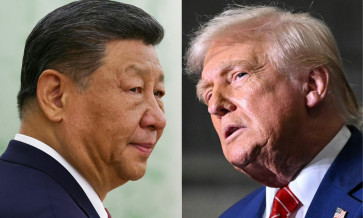Popular Reads
Top Results
Can't find what you're looking for?
View all search resultsPopular Reads
Top Results
Can't find what you're looking for?
View all search resultsEditorial: Integrating city transportation
Jakartaâs road users have long complained of the reckless and dangerous driving of city buses and other forms of public transportation
Change text size
Gift Premium Articles
to Anyone
J
akarta's road users have long complained of the reckless and dangerous driving of city buses and other forms of public transportation. Drivers of public transportation bring chaos to the city's roads, as they have to collect as many fares as possible to make ends meet under the current payment system.
We believe the Jakarta Transportation Cooperative's (Kopaja) decision to join PT Transportasi Jakarta (Transjakarta) is an initial step toward elimination of the demanding payment system, in which the lion's share of the drivers' earnings are paid as a flat fee to private vehicle owners.
Under Transjakarta's management, Kopaja will be paid per kilometer traveled by its buses, while its drivers will receive fixed wages. Currently, Jakarta's streets are plied by an eclectic mix of public transportation, including Mikrolet and KWK minivans and Kopaja and Metro Mini minibuses. Those vehicles are mostly owned by individuals and small firms.
Traffic congestion is exacerbated by tight competition among drivers, who stop their vehicles anywhere to pick up or drop off passengers. They often, furthermore, idle their vehicles to wait for passengers, blocking traffic.
According to Kopaja chairman Nanang Basuki, his group has 1,470 buses, including 120 with air-conditioning. The cooperative, which includes some 600 bus owners, is expected to start joining the city-owned transportation management next month and by the end of next year, the entire Kopaja fleet will be under the control of Transjakarta.
We hope other operators follow in Kopaja's footsteps, not only to bring order to the city's roads, but also to standardize services. The current unpredictable service discourages people from using public transportation, adding to the astronomical number of private vehicles clogging Jakarta's arteries.
The integration will also cut costs for passengers switching between modes. An integrated public transportation system requires an integrated ticketing system, leading to lower fees.
Service standardization is the other major benefit of the plan. In the case of Kopaja's integration into Transjakarta, the city government can ask operators to deploy only air-conditioned vehicles with operational ages of less than 10 years.
According to the Jakarta Transportation Council (DTKJ), there are nearly 100,000 public transportation vehicles operating in Jakarta, 65 percent of which are over 10 years old.
Following integration, renovation of fleets should be the priority. The city also needs to consider gradually replacing all public minivans with medium-sized buses for the sake of efficient use of city roads. As such, no new permits for minivans should be issued.
Kopaja's incorporation into Transjakarta should be a stepping stone toward full integration of all modes of public transportation and adoption of service standardization, which today remains elusive.










